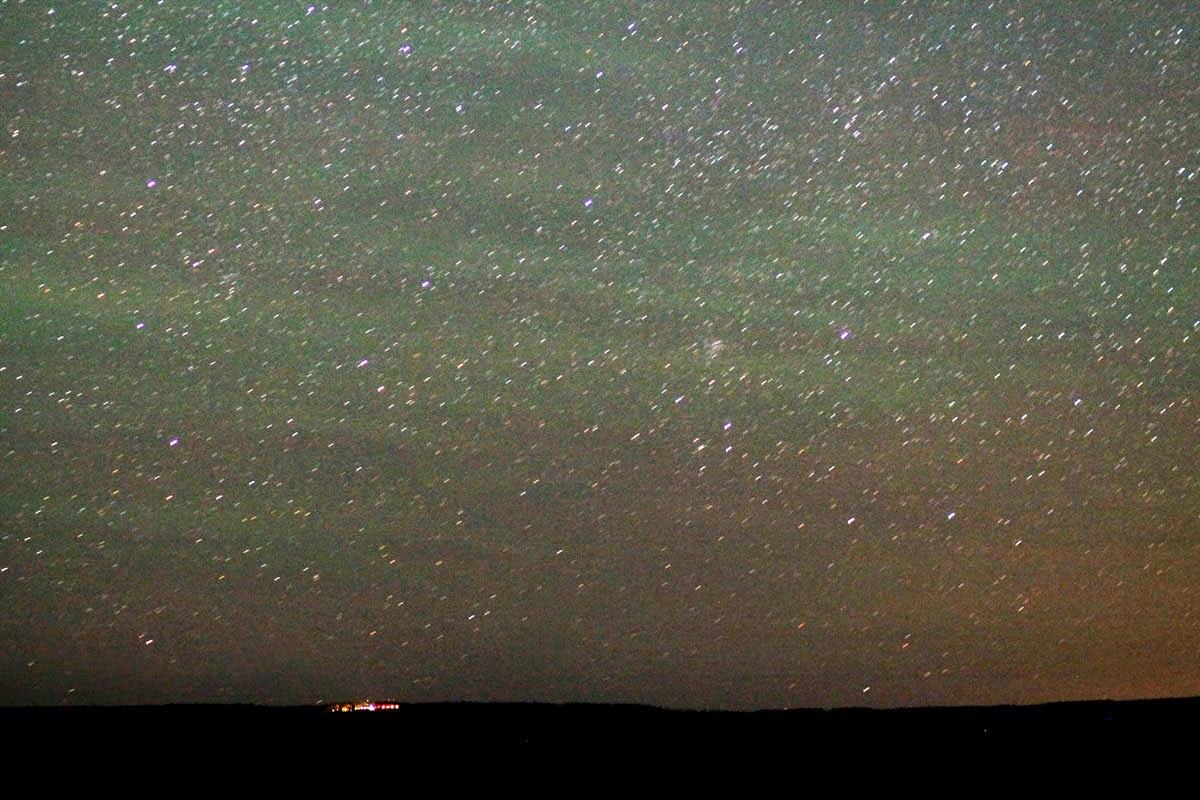While obvious from orbit, where you see a stronger glow because of the long path length an observer at altitude would look through, it is harder to spot from the ground. The last few years we've had good displays from the Grand Canyon Star Party, perhaps because of the dark northern sky, and also perhaps because they are generally held near the summer solstice. Airglow is caused by excitation of molecules in the upper atmosphere by ultraviolet light of the sun, and the light of the glow is discharged at night after the sun sets. At the Summer solstice, my thinking is that with the long days, and the sun not being very far below the northern horizon, the airglow display from Northern Arizona might be enhanced. While the green glow is caused by the excitation and discharge from oxygen molecules, in the near-infrared, the sky is aglow from OH emission caused by the same effect. The IR emission was discovered by Aden Meinel in the 1950s, a well known astronomer of the middle of the last century that all Arizonans likely know (and I had occasion to meet several times). Fortunately, I brought my IR-modified Canon 20D, which captures near-IR redward of 720nm. At left is shown a fisheye view showing this OH emission - it looks like clouds, but the sky is just aglow from a multitude of emission lines. There was no moonlight, no city lights to illuminate these "clouds" from below... Looking North towards Polaris, just above center, the fisheye view shows the Big Dipper at left to Cassiopeia at right.
Comparing the above view to a visible-light image, the first thing that I noticed is that besides the change in airglow, even the constellations look different! Check out the comparison at left, showing the view of the Big Dipper from the picture above, to the visible-light view. With the lines I've drawn showing the dipper outline, there seem to be "extra" stars on the near-IR view. Of course, it would look different with different wavelength coverage! The three stars pointed out in the IR view are red variable stars or otherwise cooler spectral types that appear brighter in the IR view than they do in visible light... As seen in the right image taken a few minutes later than the IR shot, the visible-light image is dominated by the greenish glow of oxygen emission, though since we're not in the ISS looking across at it, it appears brighter near the horizon where you are looking through a larger cross-section of the emission...
 So here are the full-size frames from the fisheye
So here are the full-size frames from the fisheye view in visible light at left, and at right is a frame from an 80mm lens shooting across the Canyon to the North Rim Lodge and stars and airglow to the horizon. Certainly if there were clouds (as it appears in the IR view above, but it was perfectly clear), there would be obscuration of the rising stars. You can also see from these images that the airglow is not uniform in intensity nor static. "Gravity Waves" propagate from the lower atmosphere, affecting the density and chemical abundance, changing the appearance of the airglow pattern.
And while single frames are of interest, many frames taken over time show the change in airglow illumination. While I didn't invest a lot of time in taking frames (a cold wife, waiting in the car tends to shorten the imaging session), taking frames over a 15 minute period, and cycled several times will have to do for now... Enjoy the view, and keep looking up!


















No comments:
Post a Comment